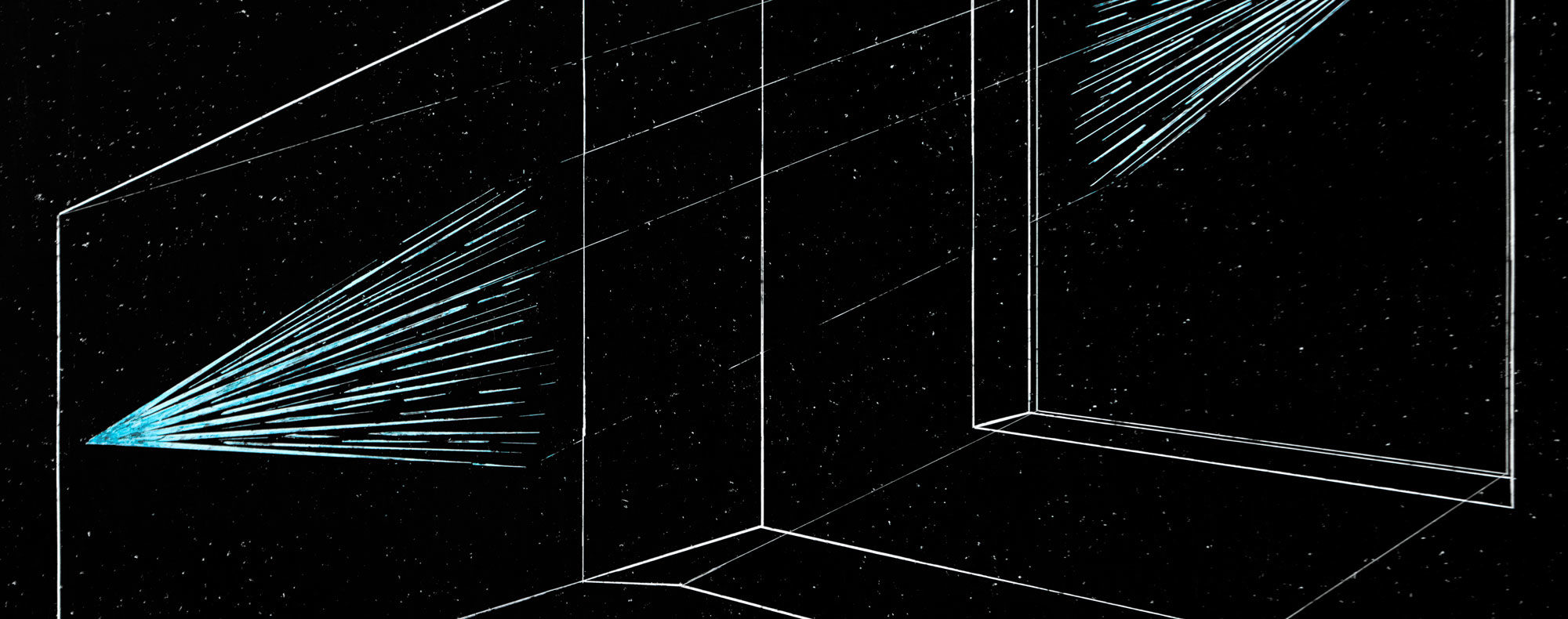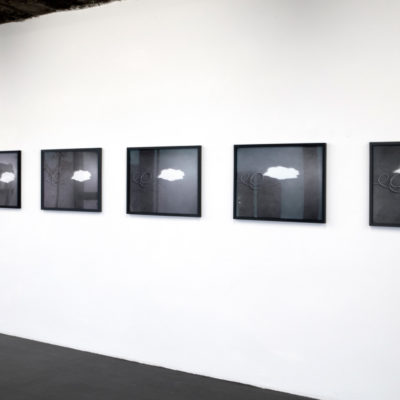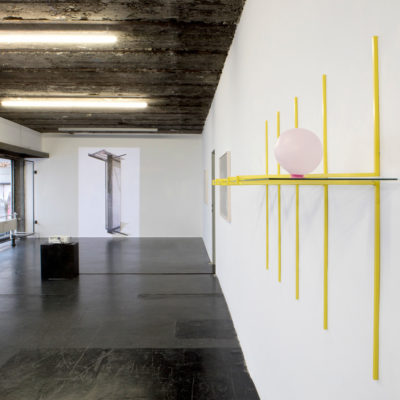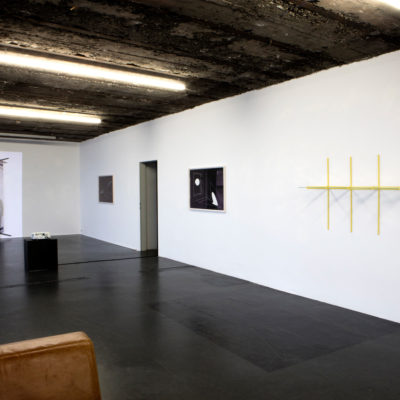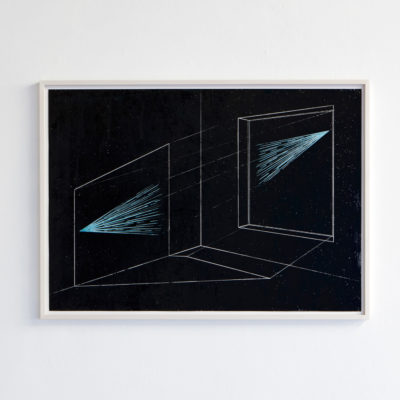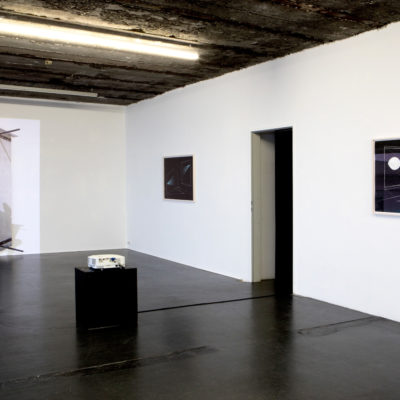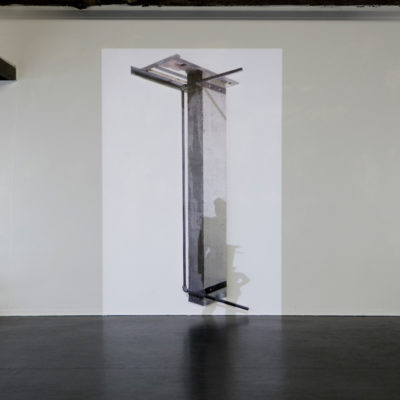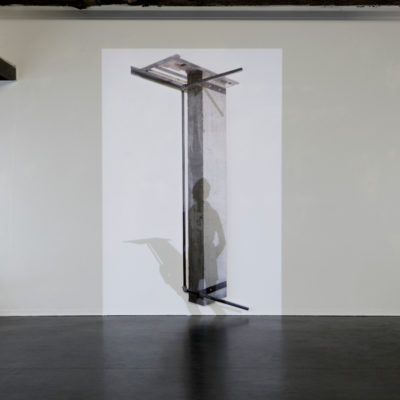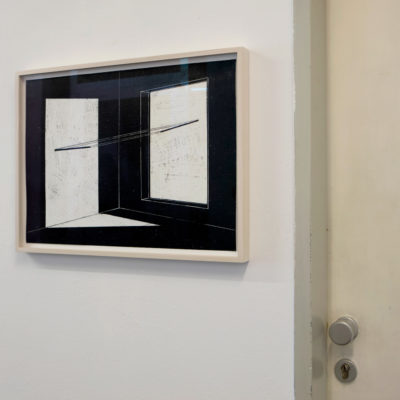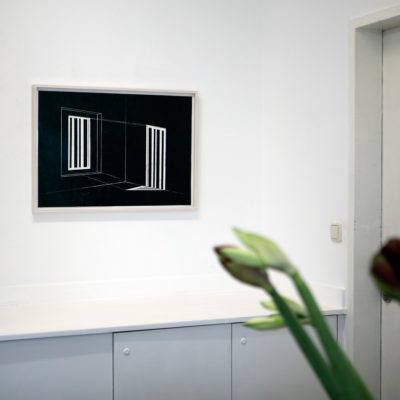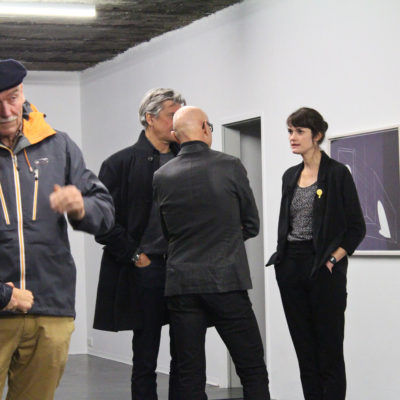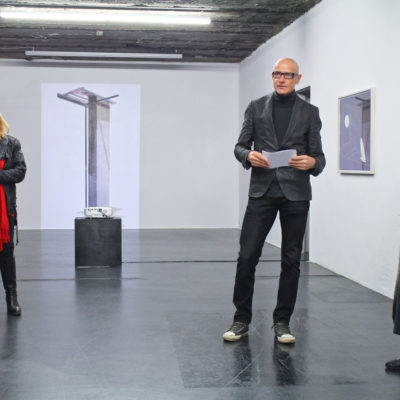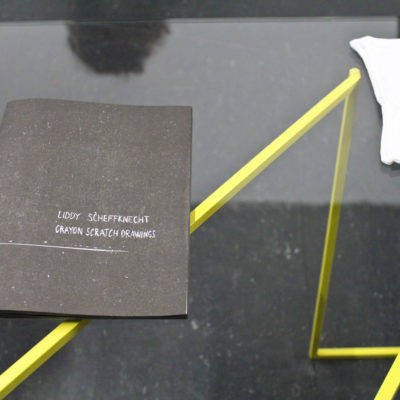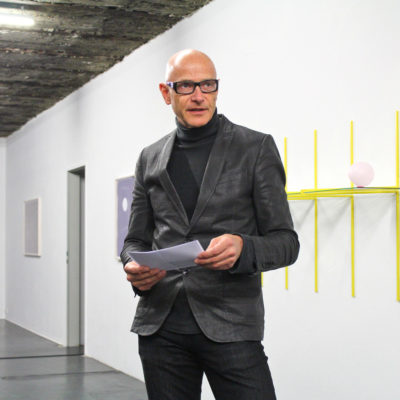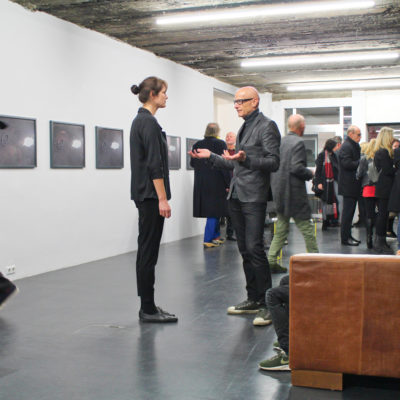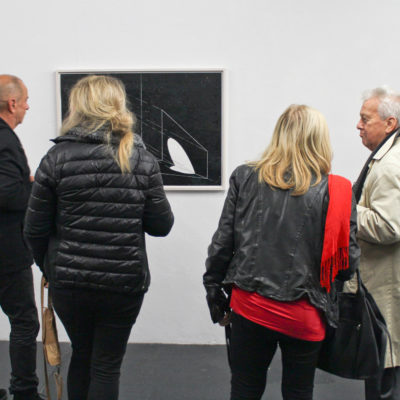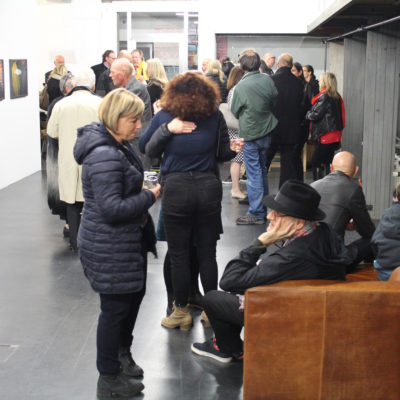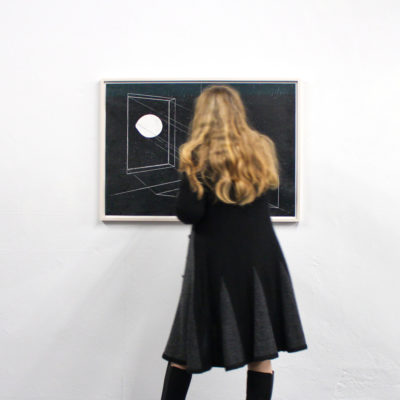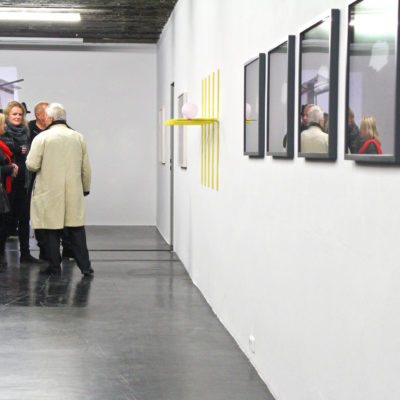Vom 16. November – 14. Dezember 2018
Eröffnung der Ausstellung am Freitag, den 16.11.2018 um 19.00 Uhr.
Zur Ausstellung spricht: Mag. Thomas Häusle – Leiter Kunstraum Dornbirn
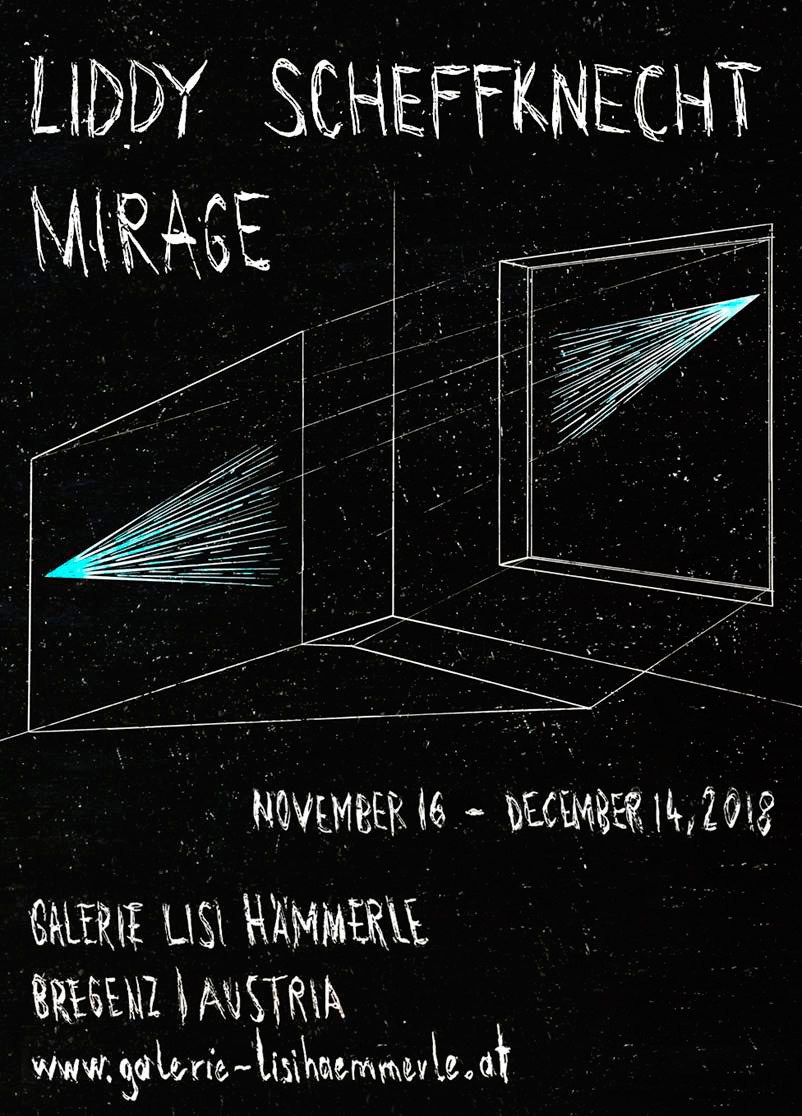
Liddy Scheffknechts Arbeiten überspannen ein breites mediales Spektrum und sind dabei dennoch Teil eines kohärenten, fortlaufenden Programms. In fotografischen Sequenzen, Installationen, Skulpturen, Zeichnungen, Projektionen und Medienhybriden untersucht sie spielerisch und mit Präzision das Verhältnis von Zeitlichkeit, Wahrnehmung und Raum. Dabei werden Erdrotation und immaterielle Medien wie Sonnenlicht und Schatten zur Verwendung gebracht ebenso wie klassische bildhauerische Materialien und digitale Medien.
Die ortsspezifische Installation mirage setzt sich aus einem Bild, einer Projektion und dem Ausstellungsraum selbst zusammen und bezieht sich auf das optische Phänomen der Luftspiegelung. Trifft Licht im flachen Winkel von einer heißen auf eine kalte Luftmasse, wird es gebrochen. Es entstehen optische Versetzungen und Verdoppelungen.
Dem Konzept der optischen Verdoppelung folgend, isoliert Liddy Scheffknecht ein innenarchitektonisches Element des Ausstellungsraumes: einen Betonpfeiler – und stellt das Motiv dem Abbild gegenüber. Damit tritt die funktional-statische Rolle des Pfeilers zugunsten seiner ästhetischen zurück und erhöht ihn zur minimalistischen, freistehenden Säule. Säulen exemplifizieren Gestaltungs- und Ordnungssysteme und erwecken bei Kunst- und Architekturtheoretikern genug Interesse, um an ihnen Stil- und Epochenzuordnungen vornehmen zu wollen. Im modernen Galerieraum treten sie allerdings im besten Fall in den Hintergrund und werden nur peripher wahrgenommen. Oft verstellen sie den Blick der Betrachter und zwingen diese, unterschiedliche Positionen im Raum einzunehmen, um sie auszublenden. Diese zwiespältige Spannung von Betrachter und Nicht-Betrachtetem wird von Liddy Scheffknecht um eine weitere Verdopplung ergänzt: Gleich einer Luftspiegelung eines Ausstellungsbesuchers wandert ein menschlicher Schatten auf der Bildfläche dem Volumen der Säule entlang. Der Schatten richtet sich auf und entfaltet sich. Er beginnt sich aus dem Bildraum in den Ausstellungsraum zu bewegen, um sich dann langsam wieder zusammenzuziehen und aufzulösen.
Ein weiteres funktionales Bauelement kommt in der sechsteiligen Fotosequenz pipe zum Einsatz. Sie ist Teil einer Serie von Sonnenlichtinstallationen, welche seit einigen Jahren entstehen. Ein Elektroinstallationsrohr liegt scheinbar achtlos auf einem Boden. Ein gewöhnlicher Lichtfleck im Raum, entstanden durch direkten Sonnenlichteinfall, wird durch eine auf dem Fenster angebrachte Silhouette in eine bestimmte Form gebracht. Es entsteht ein Lichtbild, welches, angetrieben durch die Erdrotation, durch das Zimmer wandert und sich in Form, Größe und Proportion langsam zu verändern beginnt. In einem bestimmten Moment verbindet sich das geformte Licht mit dem Plastikrohr im Raum. Es entsteht die Illusion einer Einheit von Gegenstand und Lichtprojektion. Die Fotoserie zeigt Momentaufnahmen des wandernden Lichts im Laufe mehrerer Stunden.
Die Zeichnungsserie crayon scratch drawings entstand als Vorstudien zu den Lichtinstallationen. In den Wachskreidezeichnungen trägt Liddy Scheffknecht erst weiße, seltener farbige, dann schwarze Wachskreide in zahlreichen Schichten auf. Aus dem tiefschwarzen Blatt werden die Motive wie Fenster, Silhouette im Fenster, der Raum und das Licht herausgeritzt und dabei ein Moment des Sonnenlaufs fixiert.
Die Ausstellung zeigt mehrere Originalzeichnungen sowie eine spezielle Edition, die zahlreiche der Zeichnungen in der Technik des Risoprints, einem maschinellen Siebdruckverfahren, reproduziert.
Die Übersetzung von Zeit in Raum ist auch Thema zweier Objekte, die sich zwischen Skulptur und Möbelstück bewegen. In einer experimentellen Anordnung beobachtet Liddy Scheffknecht wie ein Streifen einfallendes Sonnenlicht an einem Septembertag durch den Raum wandert. Alle 40 Minuten markiert sie die Position sowie den Winkel des Strahles und nimmt ihre Beobachtungen als Ausgangspunkt, um ein Regal und einen Tisch zu entwickeln, in welchem die wandernden, immateriellen Sonnenstrahlen greifbar und zu Trägern eines Regalbodens bzw. einer Tischplatte werden.
solo show
Liddy Scheffknecht – M I R A G E
Opening: Friday, November 16, 2018, 7 pm.
Opening remarks: Mag. Thomas Häusle, Kunstraum Dornbirn.
Duration of the exhibition: November 17 – December 14, 2018
Wednesday to Friday 3 – 7 pm, Saturday 11 am – 2 pm
Liddy Scheffknecht’s work spans across a wide spectrum of media and is nevertheless part of a coherent, ongoing program.
Using photographic sequences, installations, sculptures, drawings, projections, and media hybrids she analyses the relationship of time, perception and space in a playful and precise way. For this, she uses the rotation of the earth and immaterial media like sunlight and shadow as well as classical sculpting materials and digital media.
The site-specific installation mirage is composed of an image, a projection and the exhibition space itself and refers to the optical phenomenon of Fata Morgana or mirage. If light hits a border where hot and cold air meet at an obtuse angle it is refracted. The results are optical shifts and duplications.
Following the concept of optical duplication, Liddy Scheffknecht isolates an architectural design element of the exhibition space, a concrete pillar, and juxtaposes this subject with its image. This causes the role of the pillar as a functional-structural object to recede in favor of its aesthetic role, thus elevating it to a minimalist, freestanding column. Columns exemplify systems of design and order and receive enough interest from art and architecture theorists to cause them to want to categorize their style and epoch. In a contemporary art-space, a column tends to be lingering in the background and is only perceived on the periphery. They often obscure the viewer’s vision and force them to readjust their position in order to blank them out. Liddy Scheffknecht complements this ambivalent tension of viewer versus the ignored object with another duplication. Like the mirage of an exhibition visitor, a human shadow is moving across the surface of the column. The shadow straightens and unfolds itself. It starts to move from the image space to the exhibition space where it slowly contracts and dissolves again.
Another functional component is used in the six-part photo series pipe which is part of a series of sun ray installations the artist has been making for a few years. An electrical pipe is lying on the floor in a seemingly random way. A light spot which has been created by direct sunlight is shaped by a silhouette fixed to the window. The resulting light-image wanders through the space driven by the earth’s rotation and slowly changes its shape, size, and proportion. At a certain moment, the shaped light starts to fuse with the plastic tube in the space resulting in the illusion of unity of object and light projection. The photo series shows shots of the roaming light over the course of several hours.
The drawing cycle crayon scratch drawings started as a study for the light installations. In these wax-crayon drawings, Liddy Scheffknecht applies first white, sometimes colored followed by black wax crayons in multiple layers. Then she scratches motives like windows, silhouettes in windows, space and light out of the jet black paper and so fixes a moment of the suns journey in place.
This exhibition shows several original drawings as well as an edition reproducing several of her drawings in a special technique called Risoprint, which is a mechanic silkscreen process.
The translation of time into space is also the theme of two objects situated between sculpture and furniture. In an experiment, Liddy Scheffknecht observes a ray of light on a September day as it wanders through space. Every 40 minutes she marks the position and measures the angle. These observations are her starting point to develop a shelf and a table in which the wandering, immaterial rays become tangible and carriers of shelves and desktops.
Liddy Scheffknecht, born 1980 in Dornbirn/Austria, lives and works in Vienna. She has graduated from the University Of Applied Art in Vienna and the École Nationale Supérieure des Beaux-Arts Paris. Since 2006 she has been exhibiting regularly in national and international group exhibitions like the:
Biennale of Young Artists of Europe and the Mediterranean 2009, Skopje, the Moscow Biennale for Young Art 2010, Moscow, and the Sinop Biennale 2012, Istanbul.
Her last solo exhibits could be seen amongst others, 2012 in Kunsthaus Graz, 2015 in the Galerie der Stadt Wels, 2016 in Kunsthaus Nexus, Saalfelden and in the Galerie Georg Kargl Fine Arts in Vienna.
